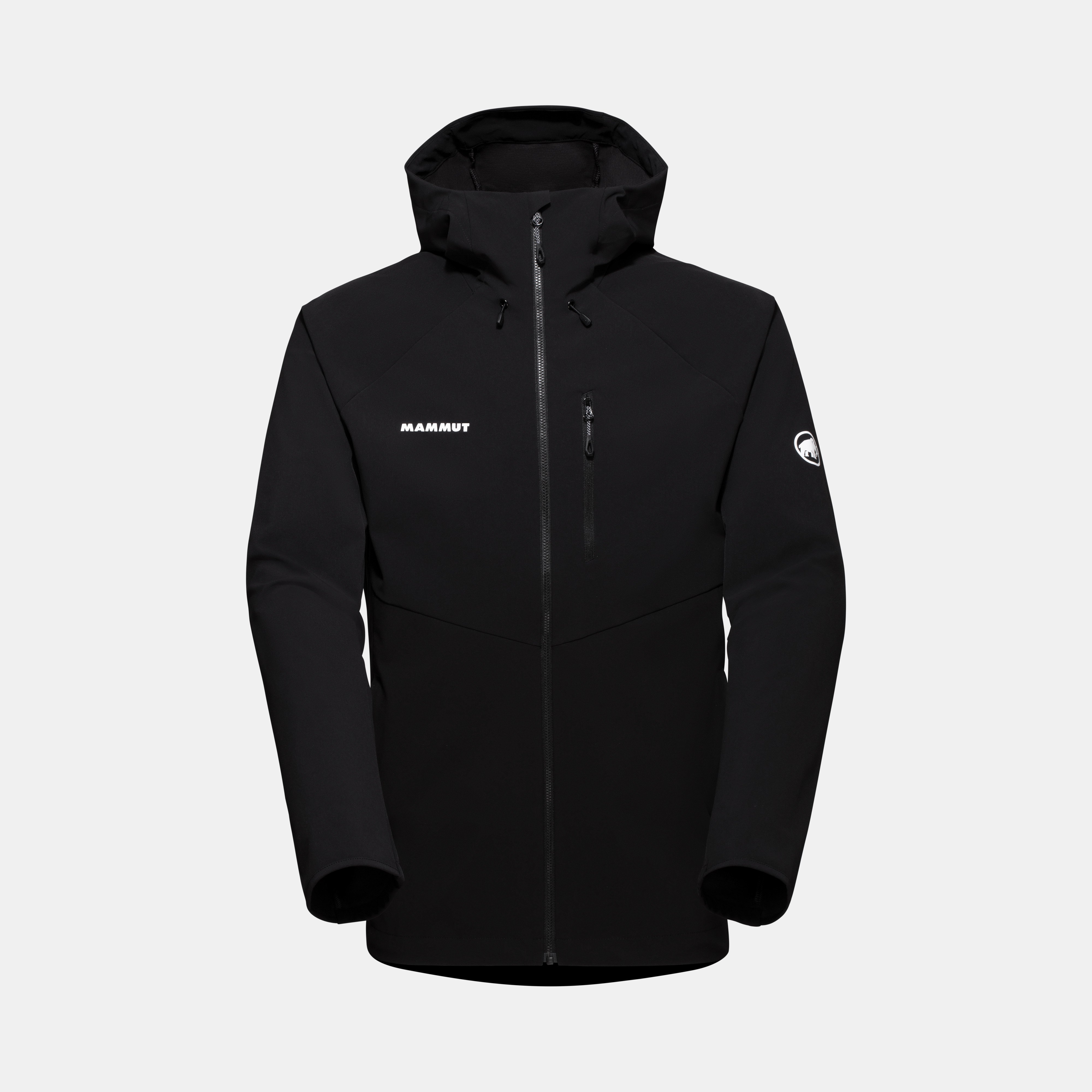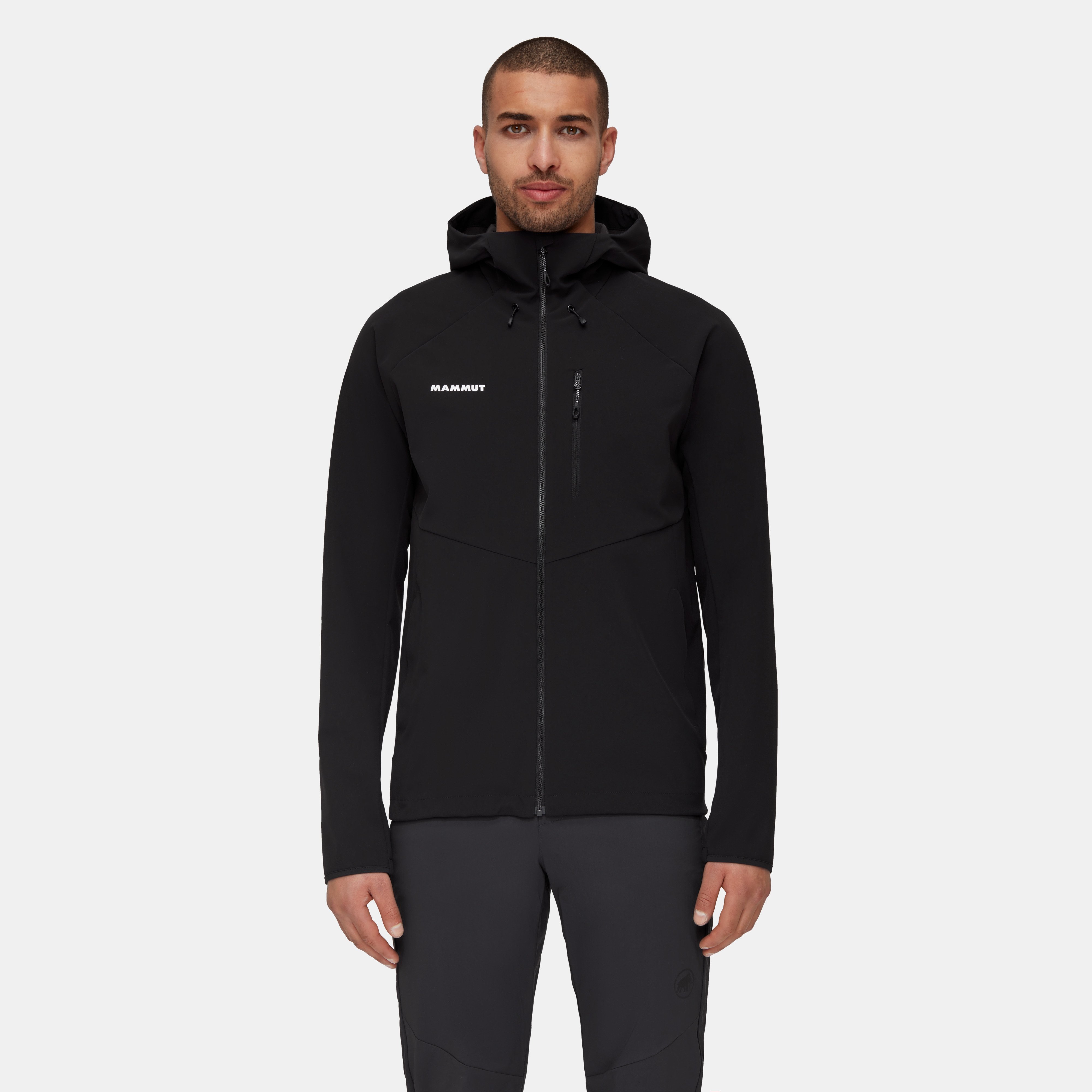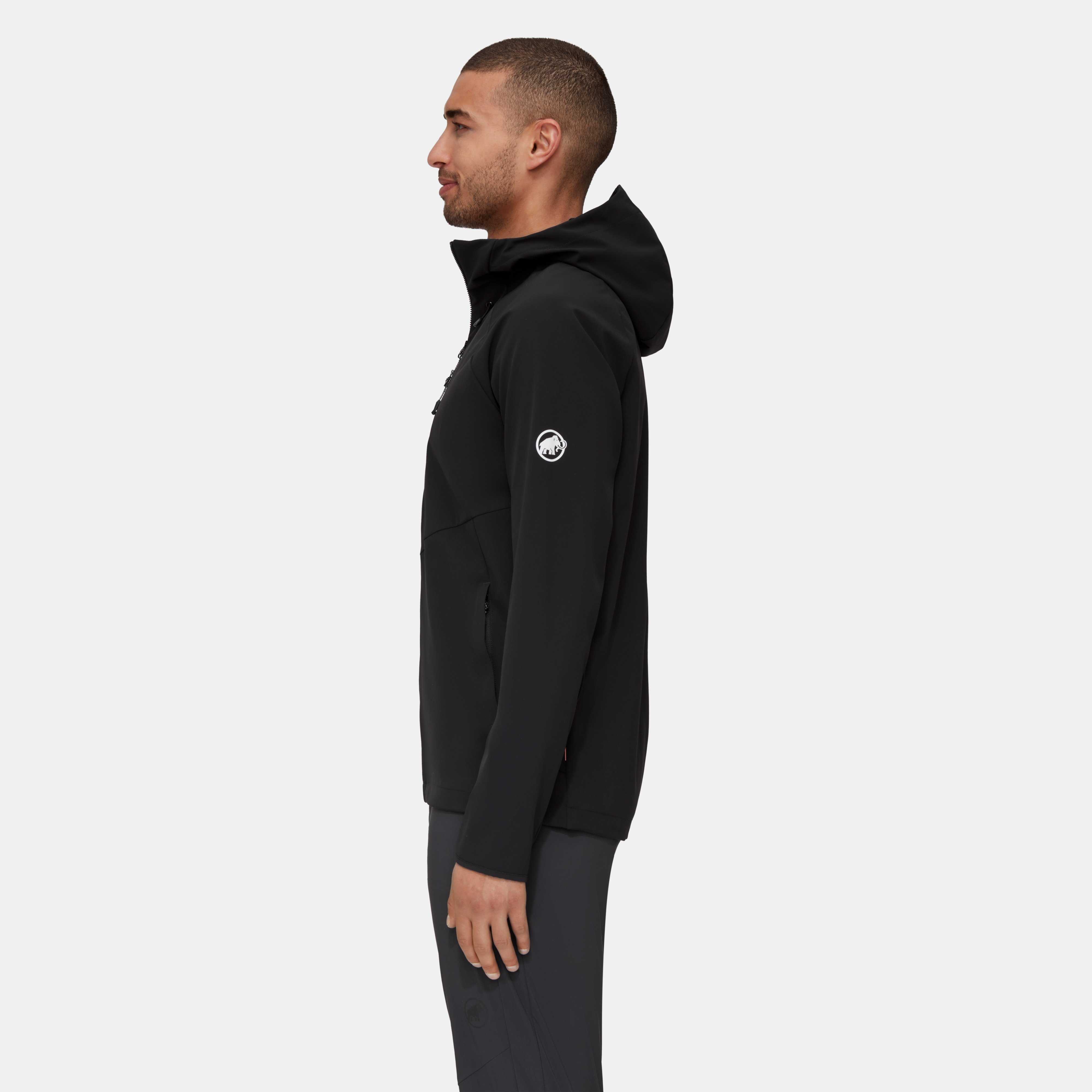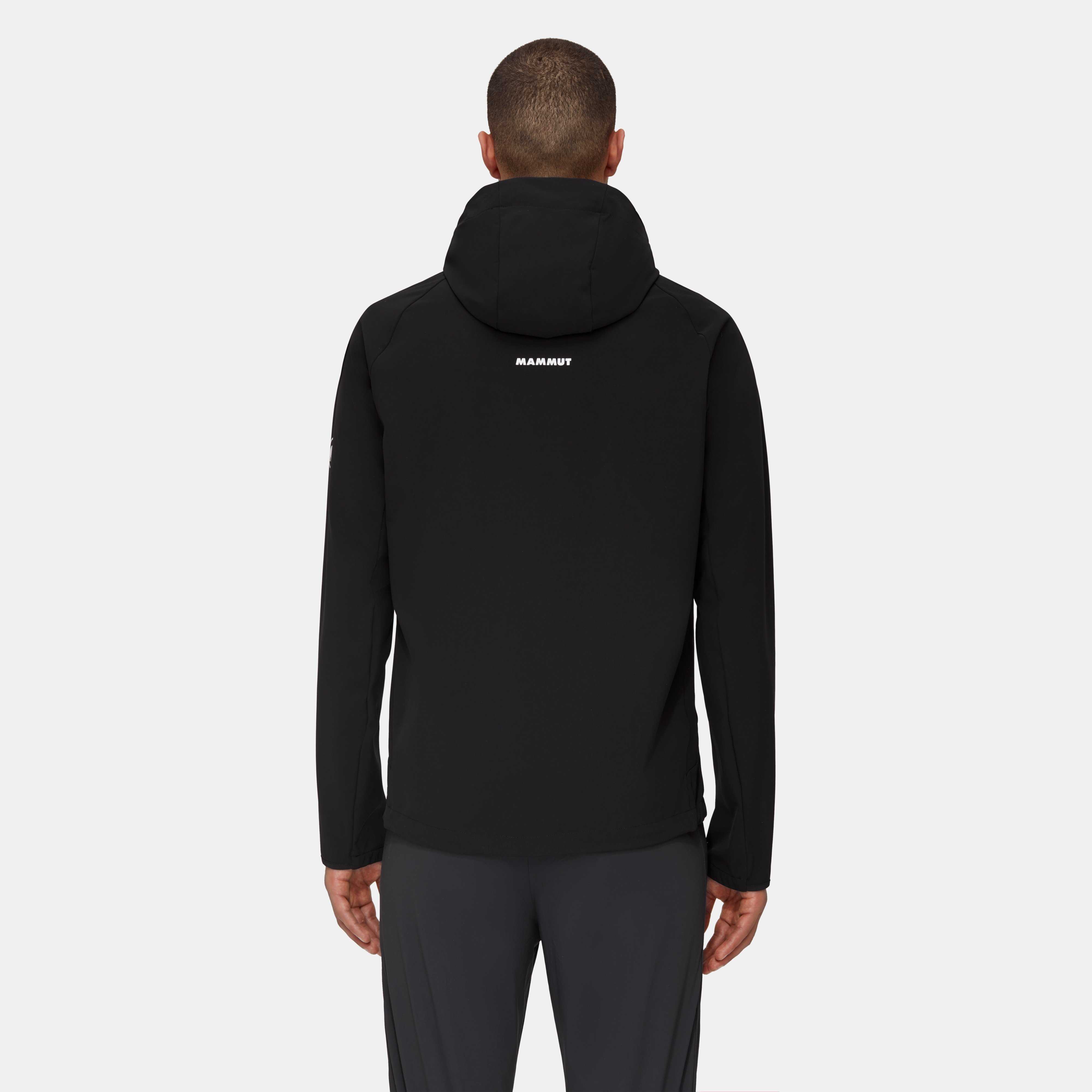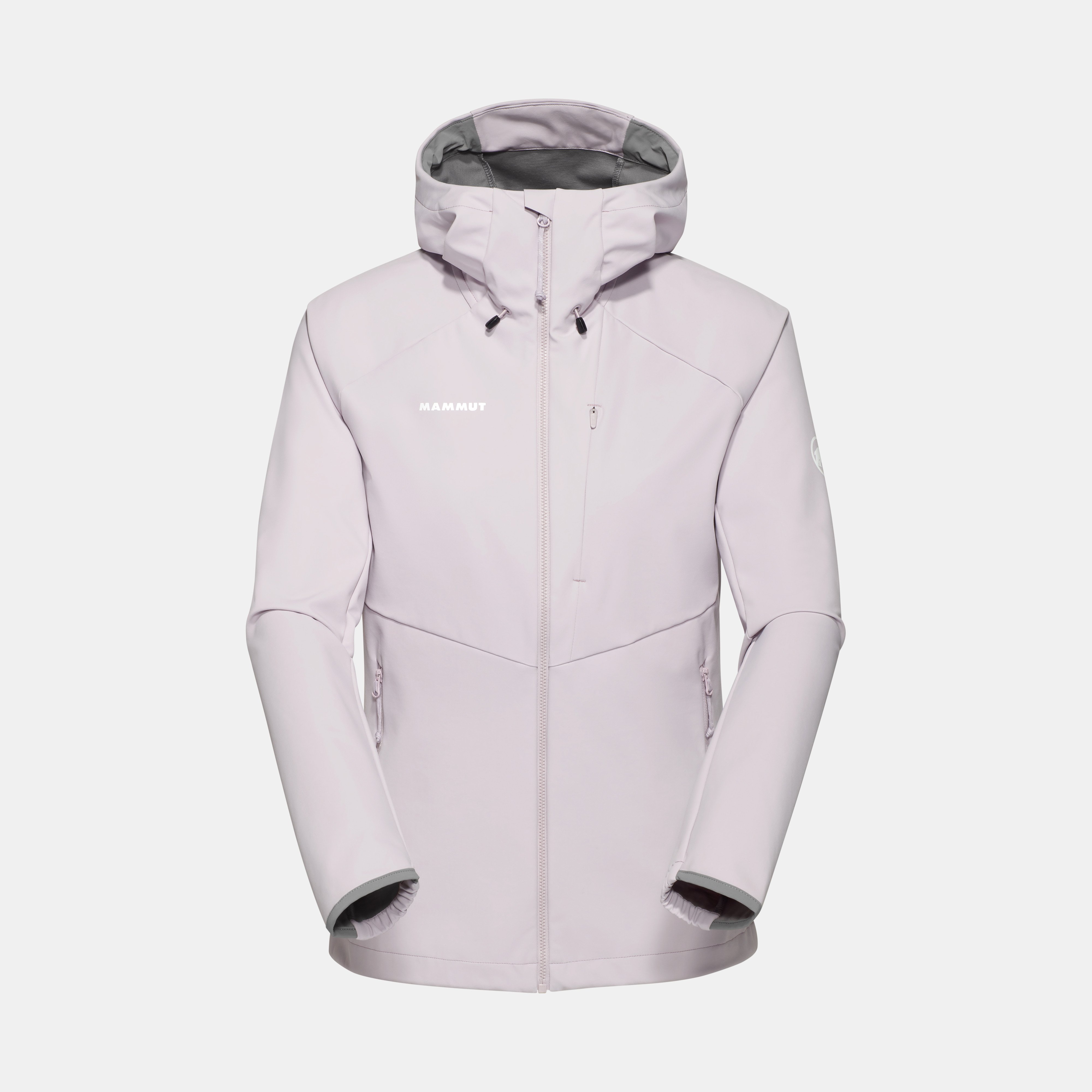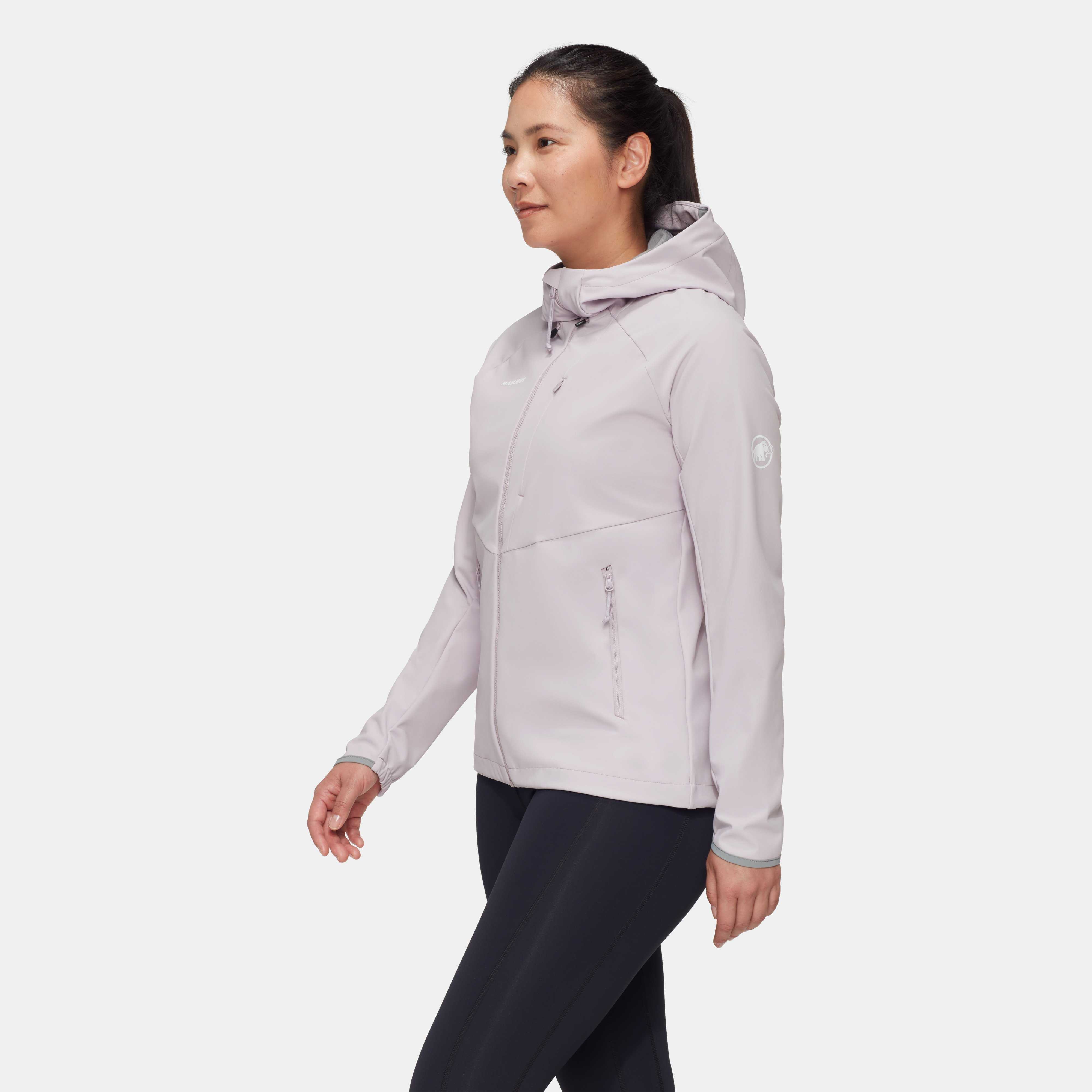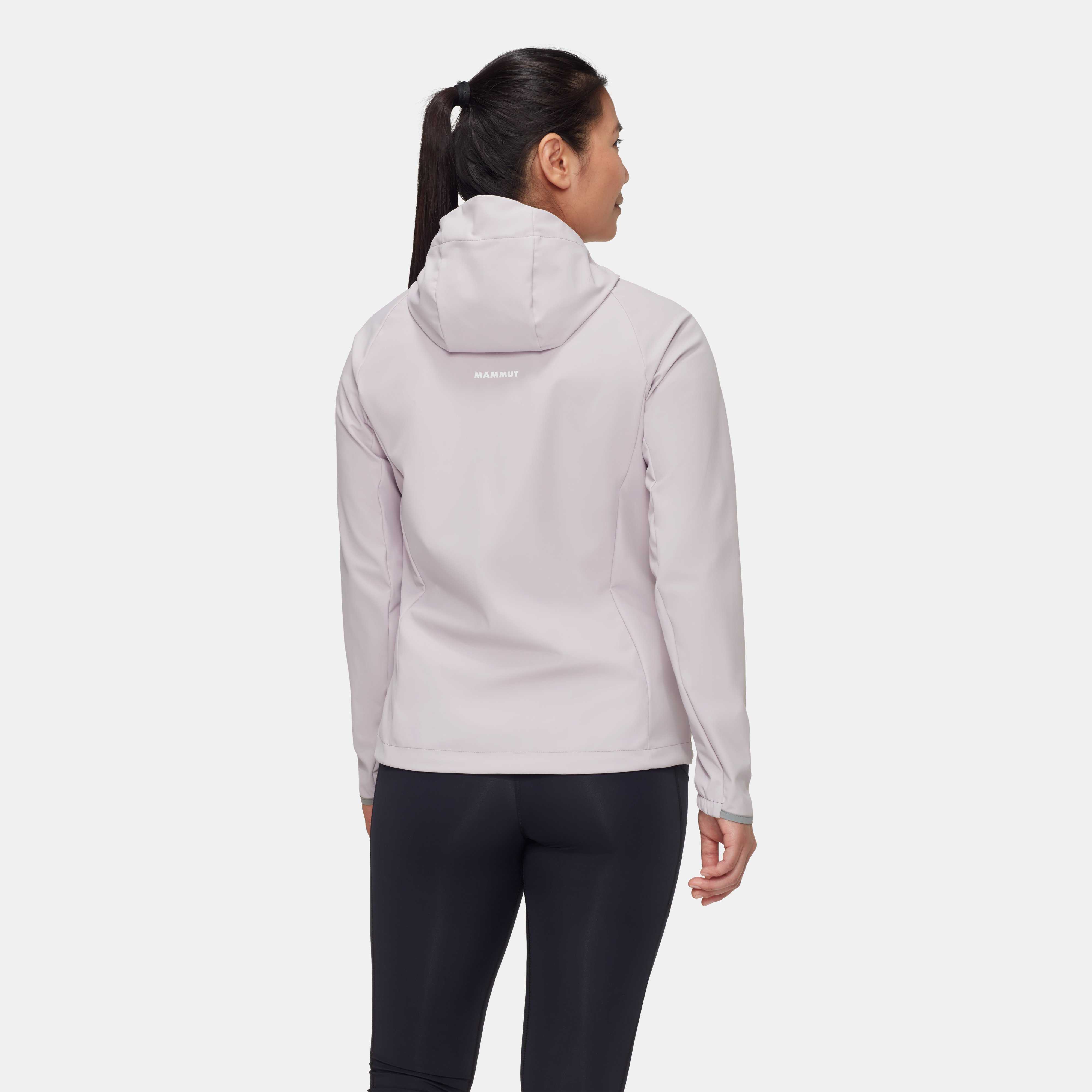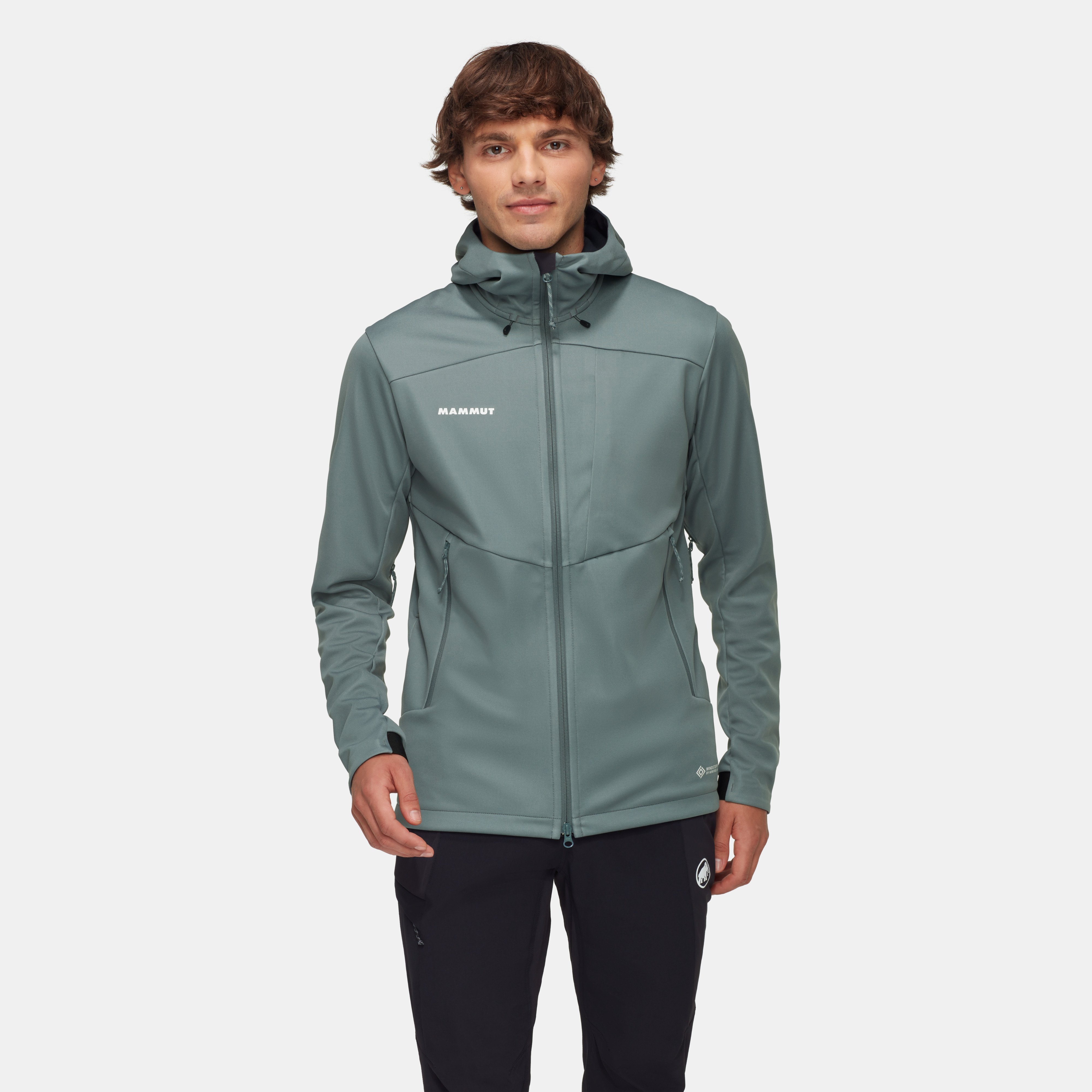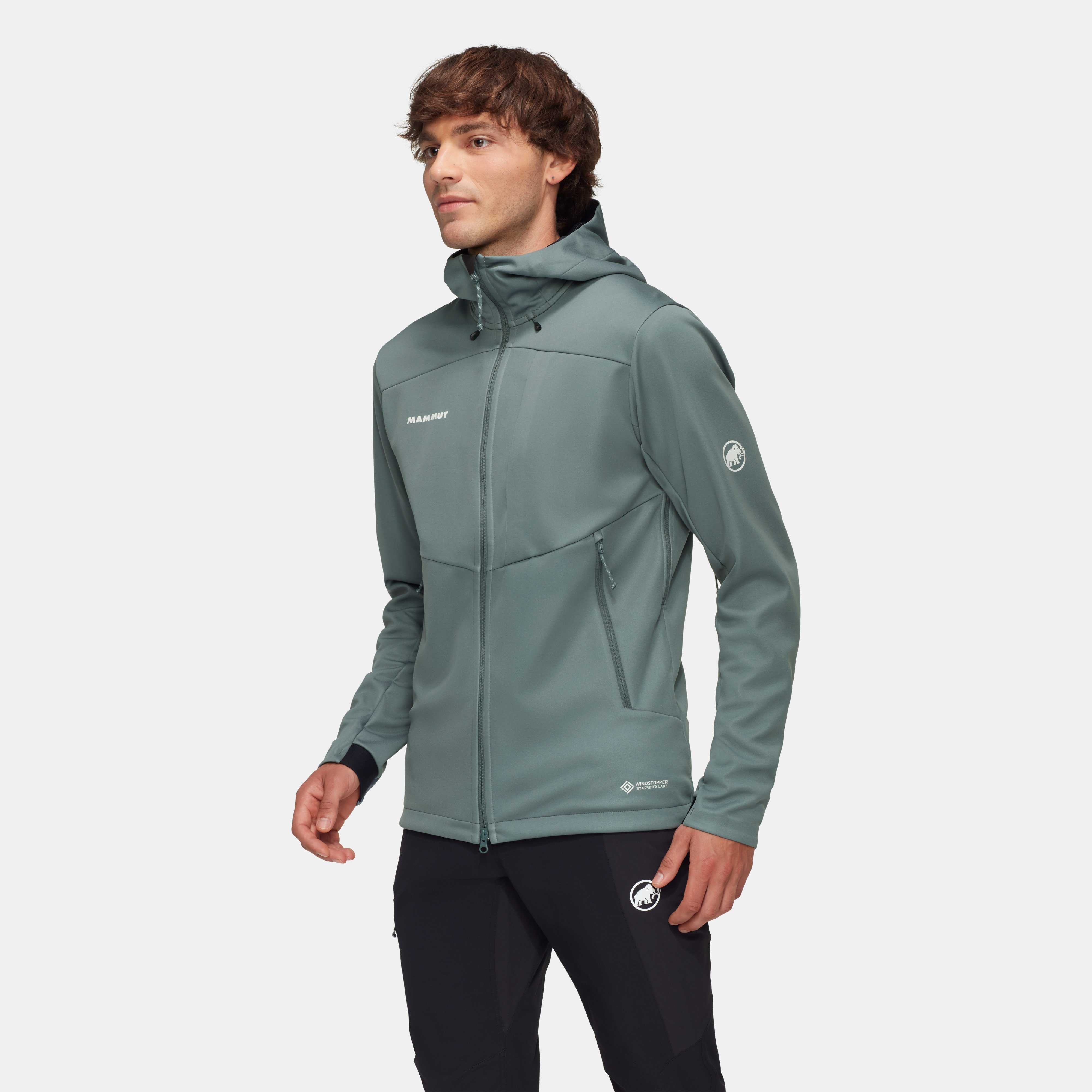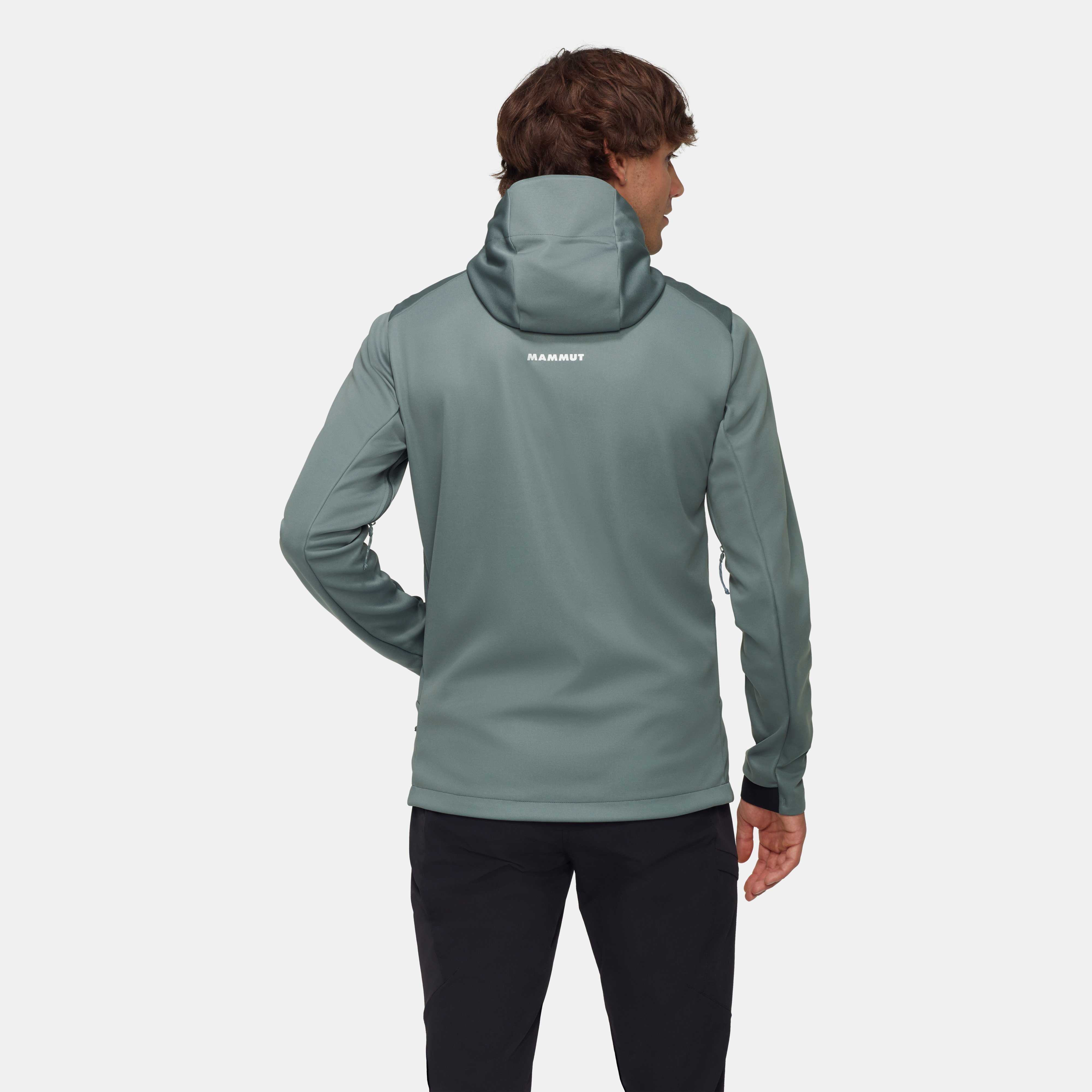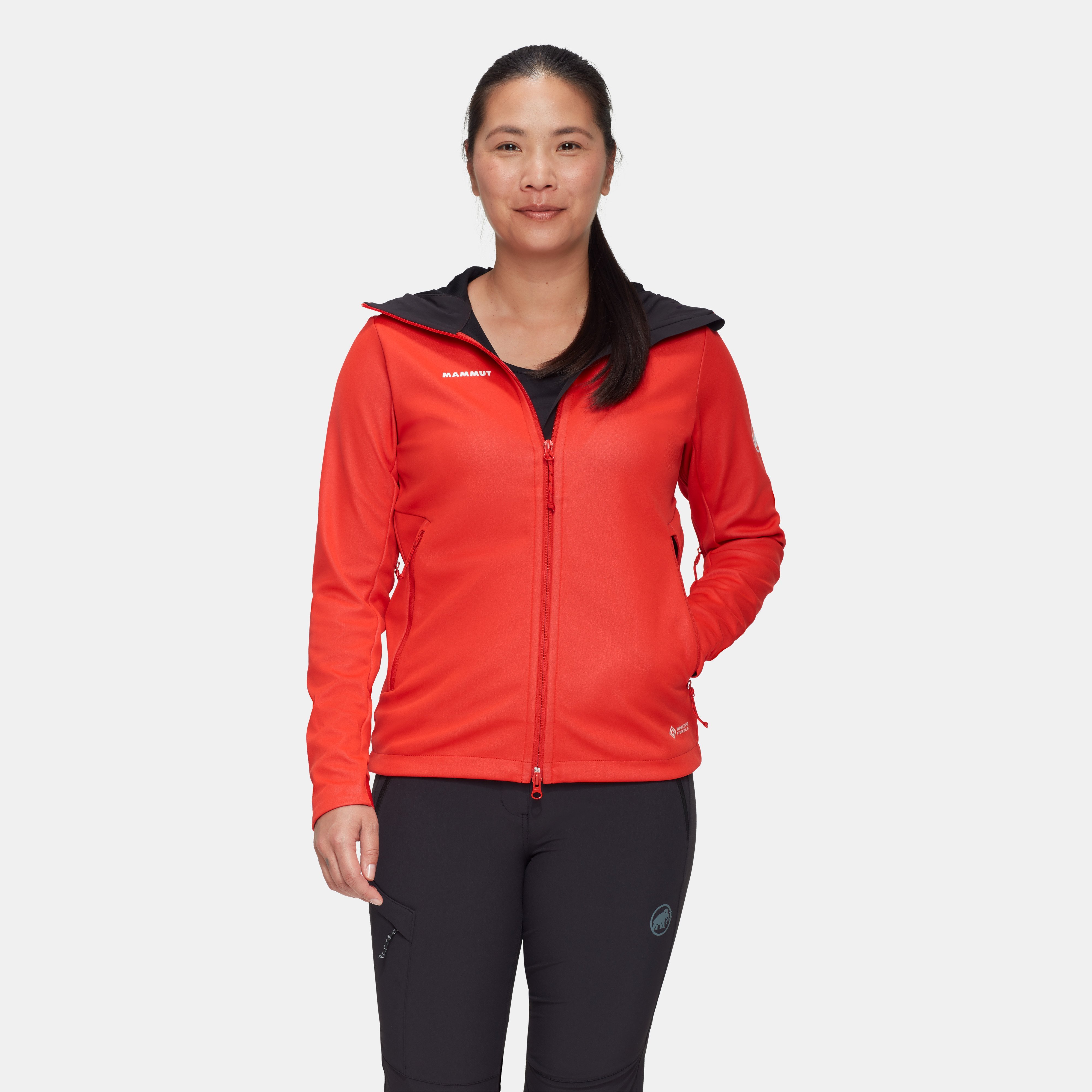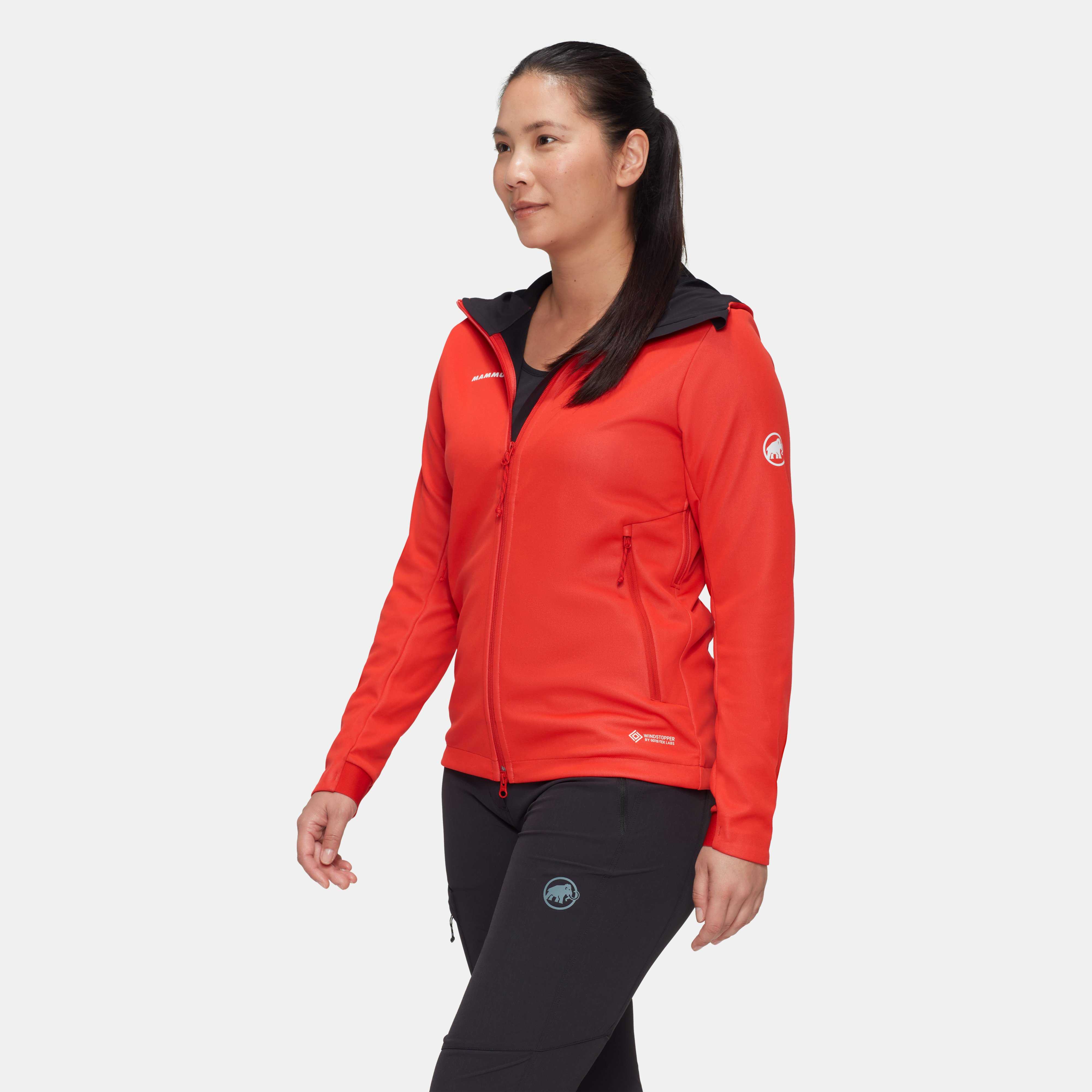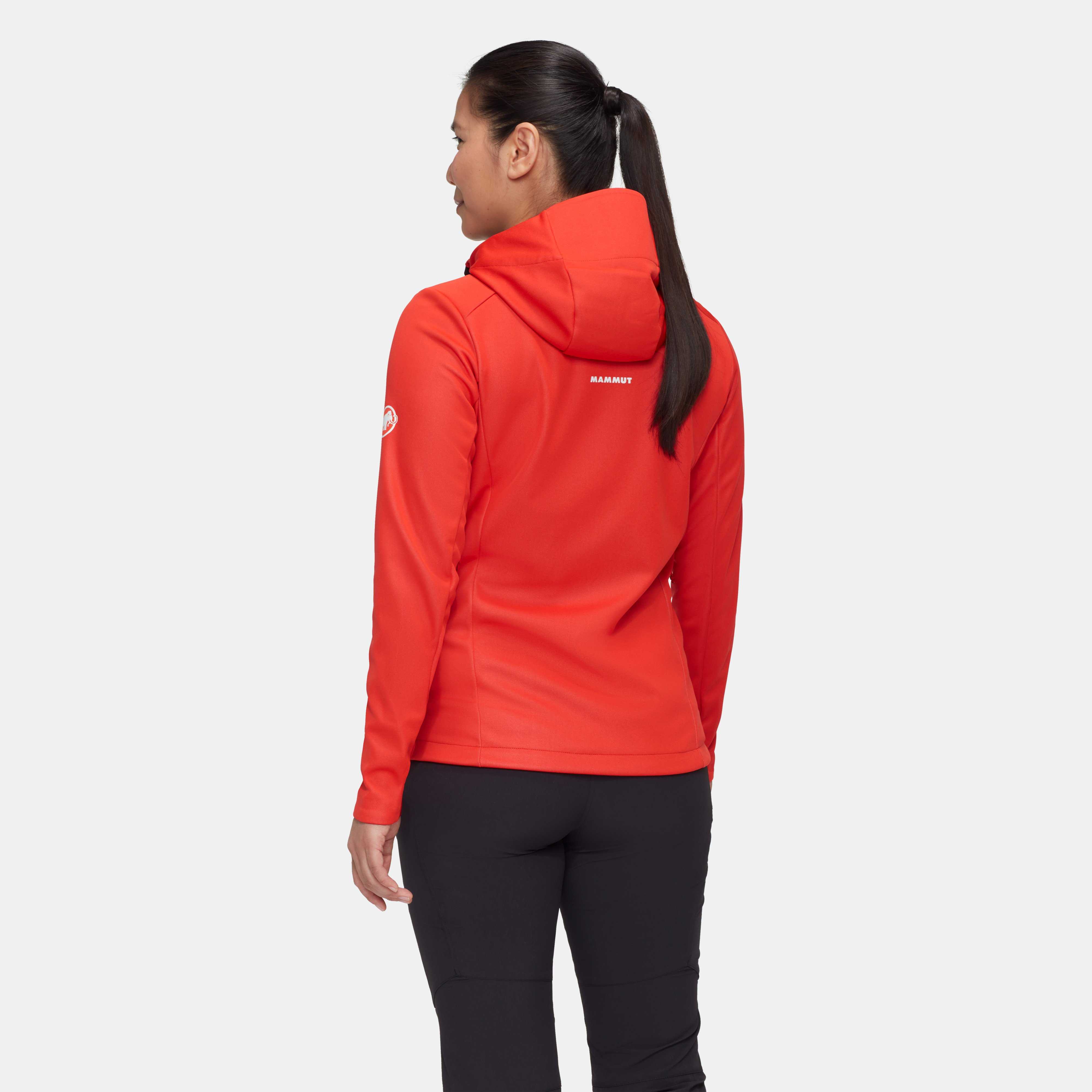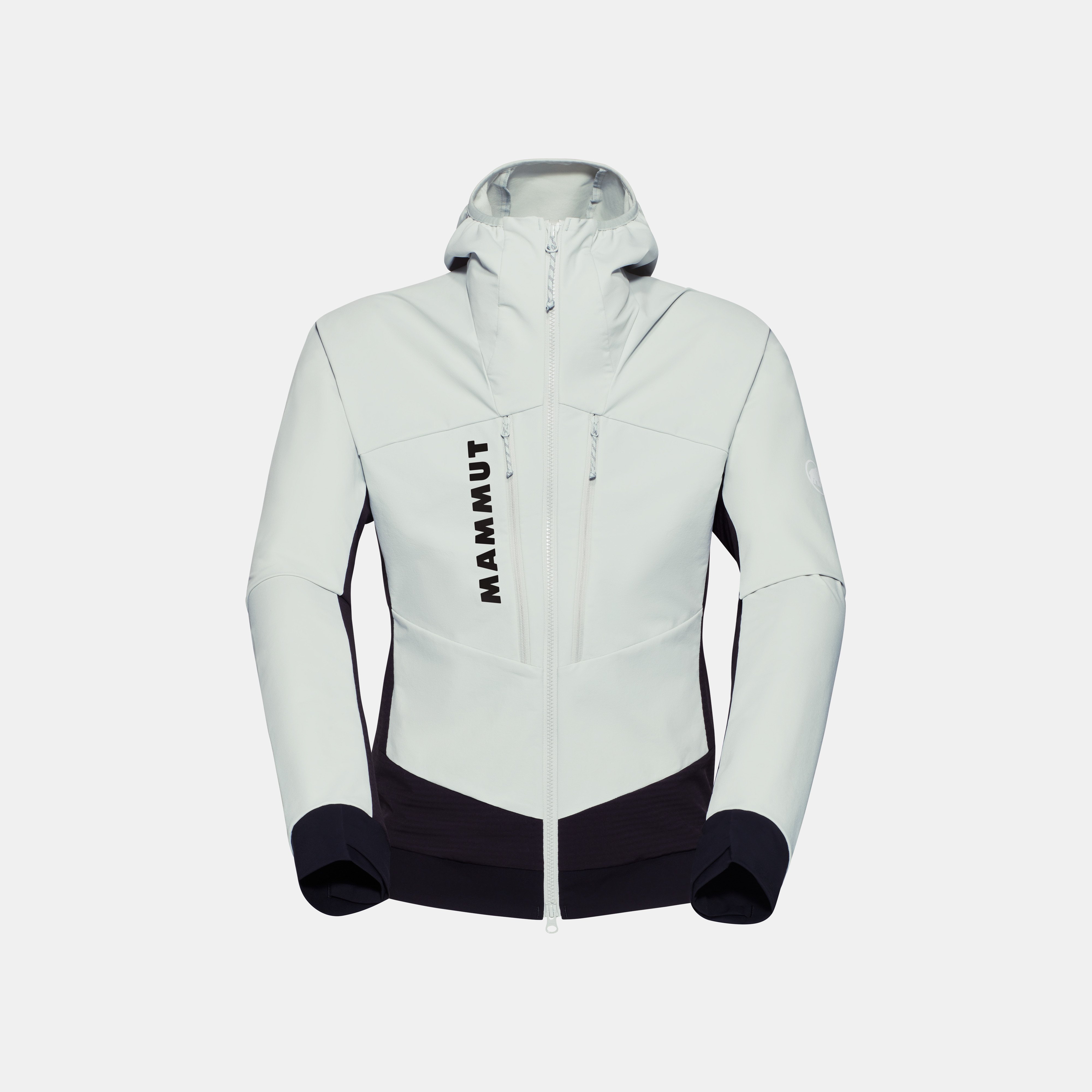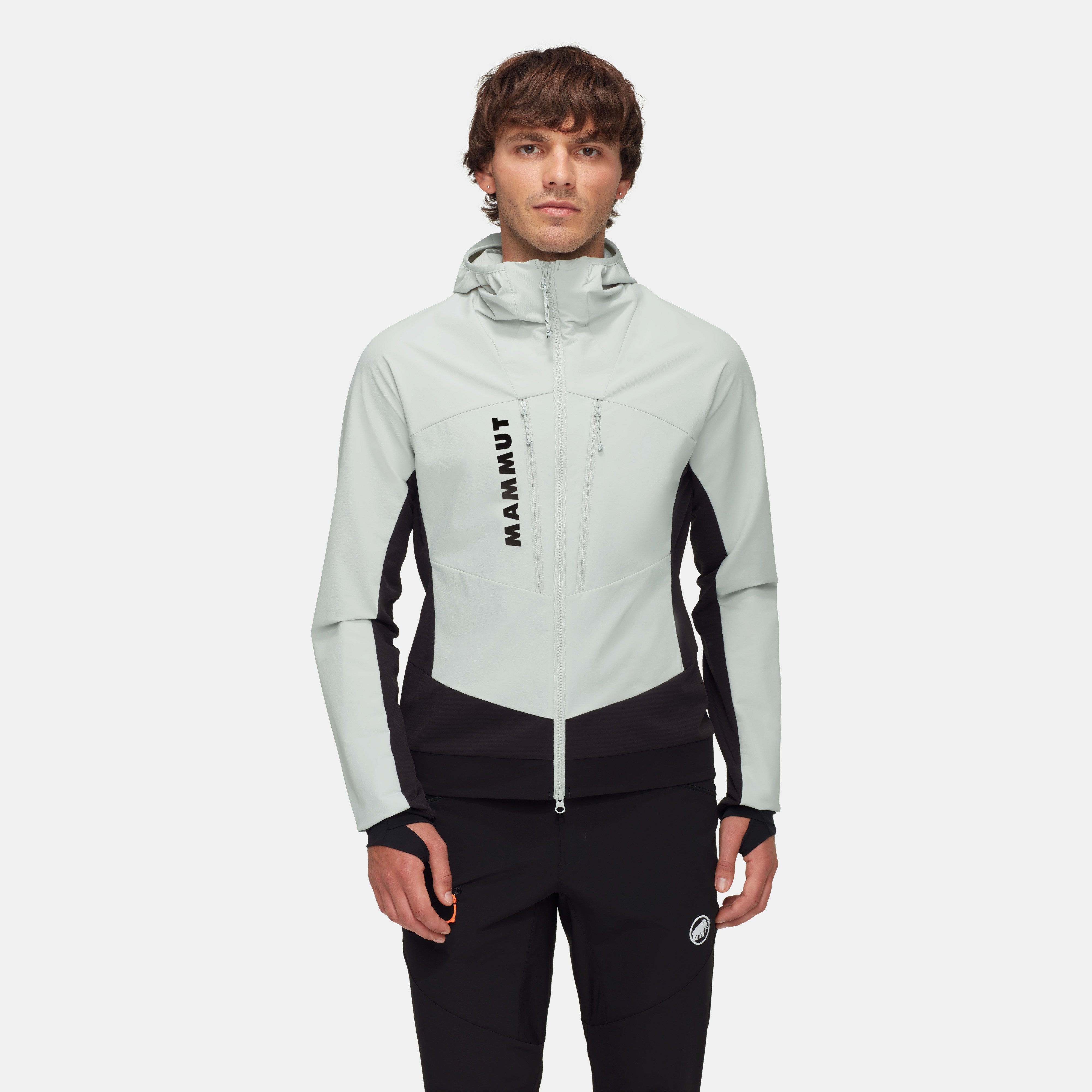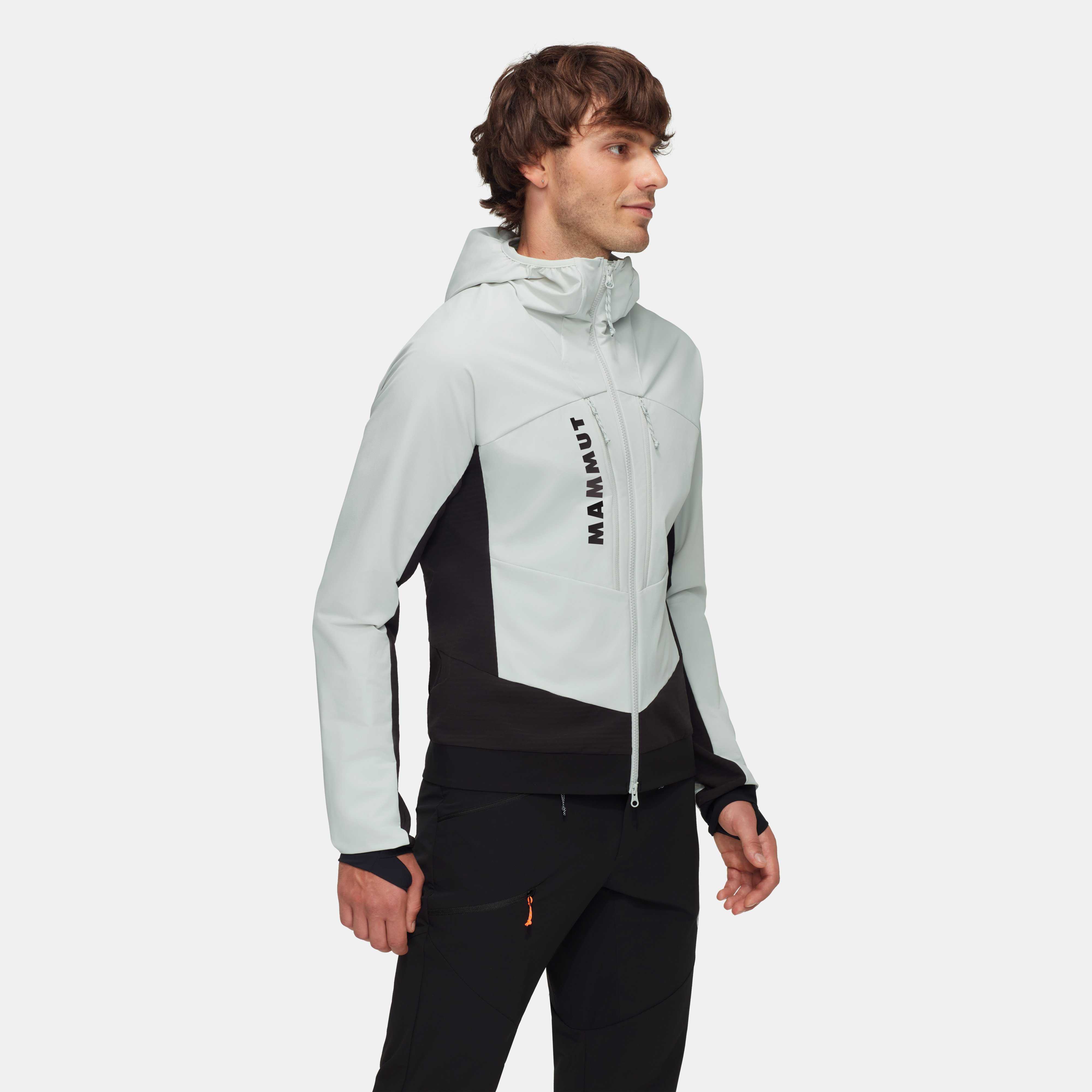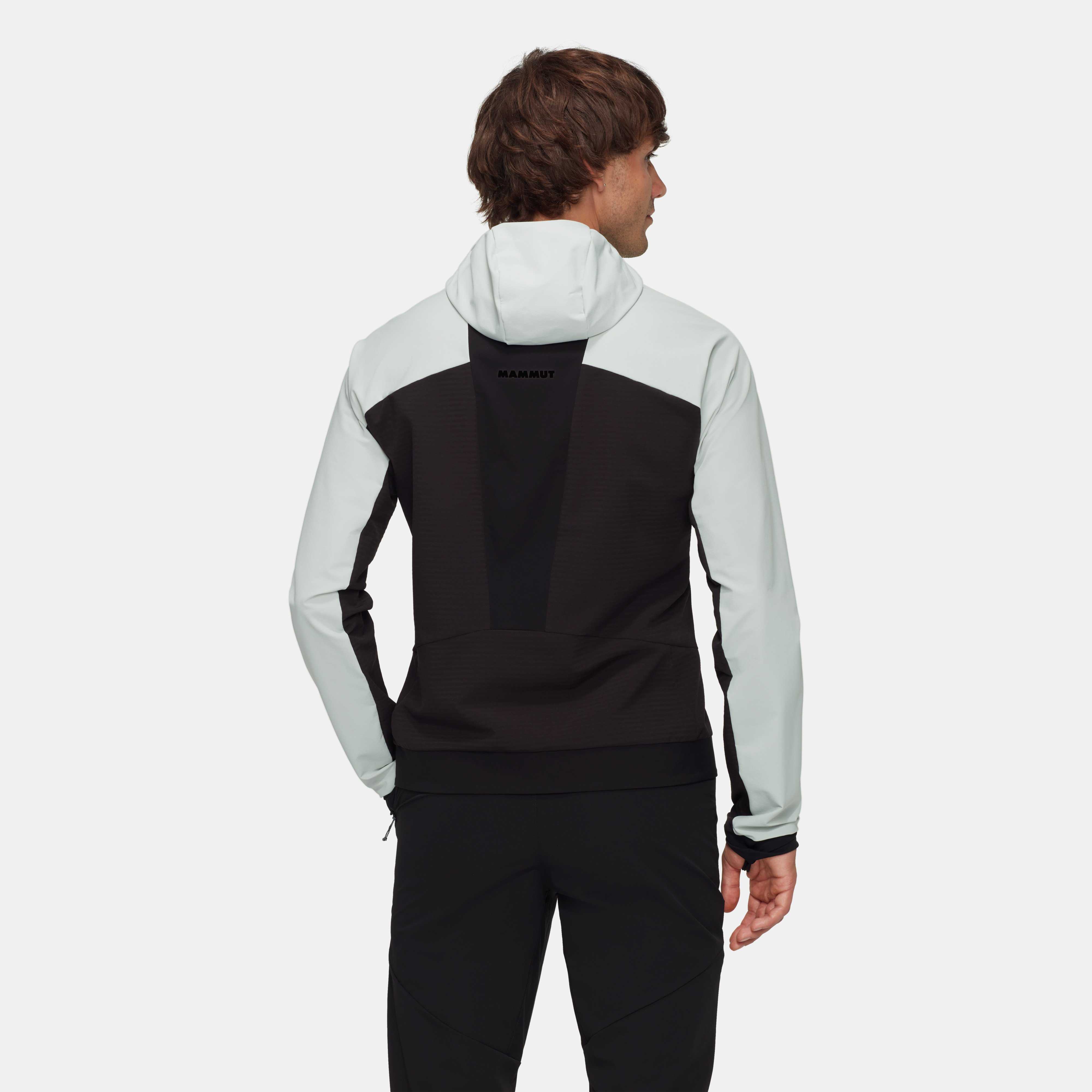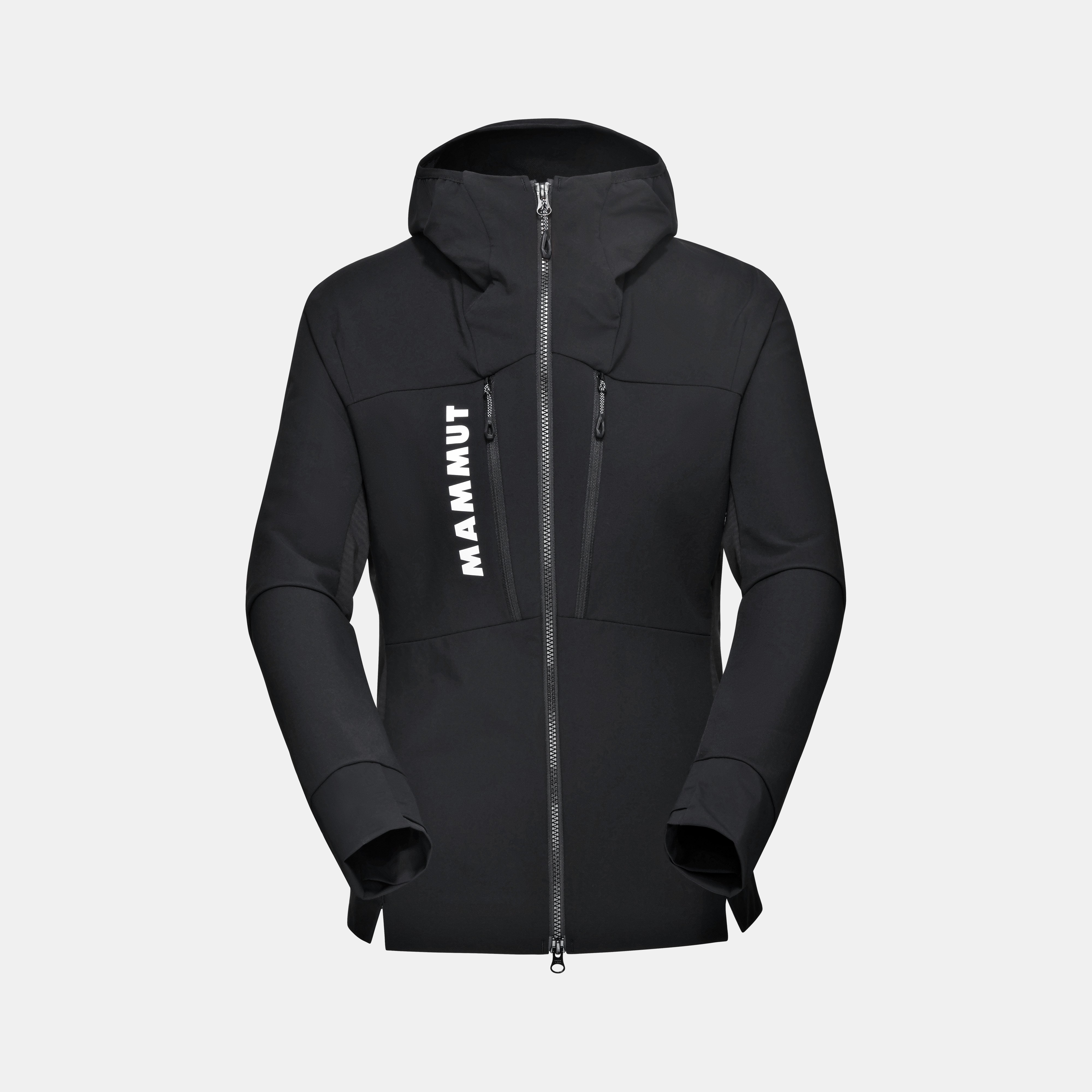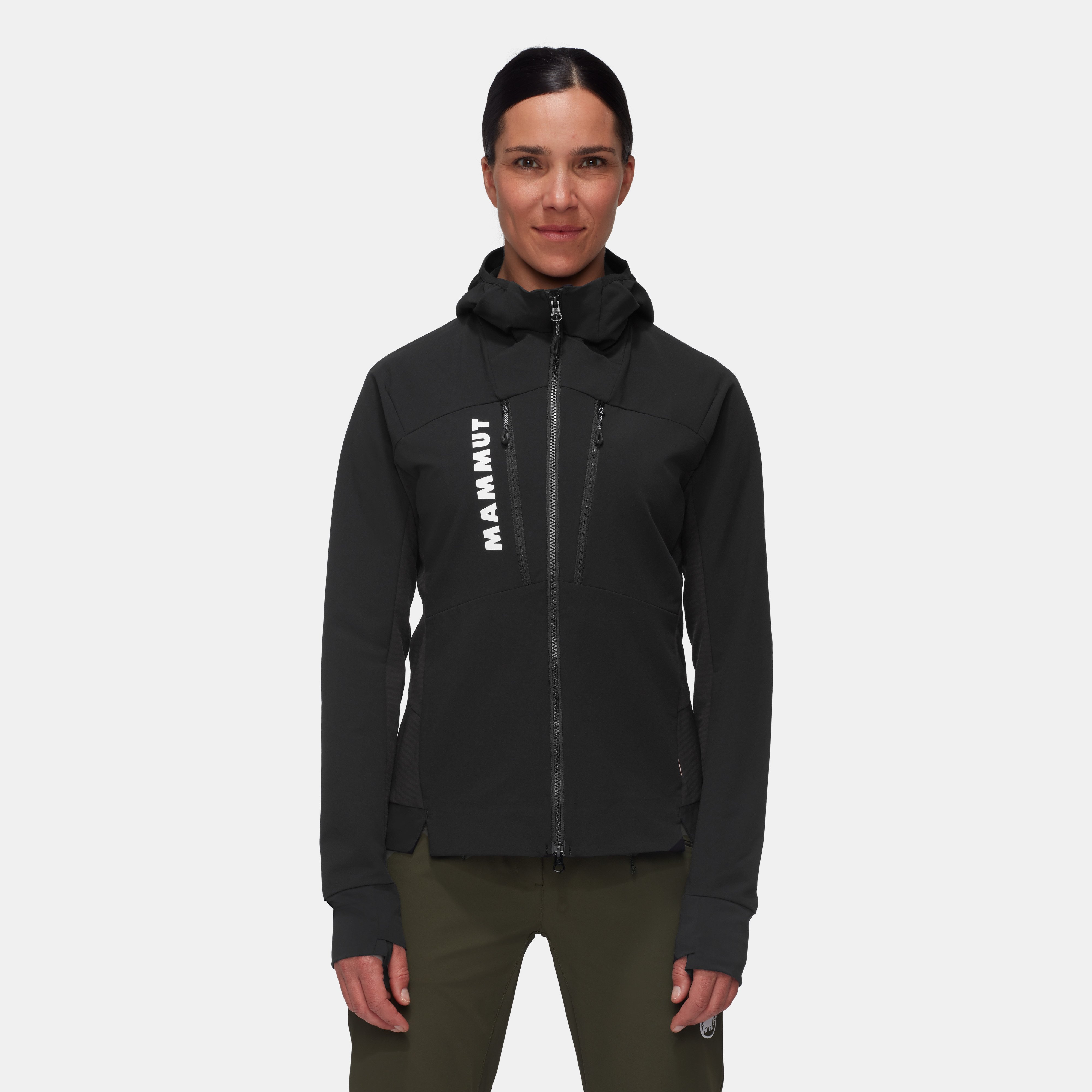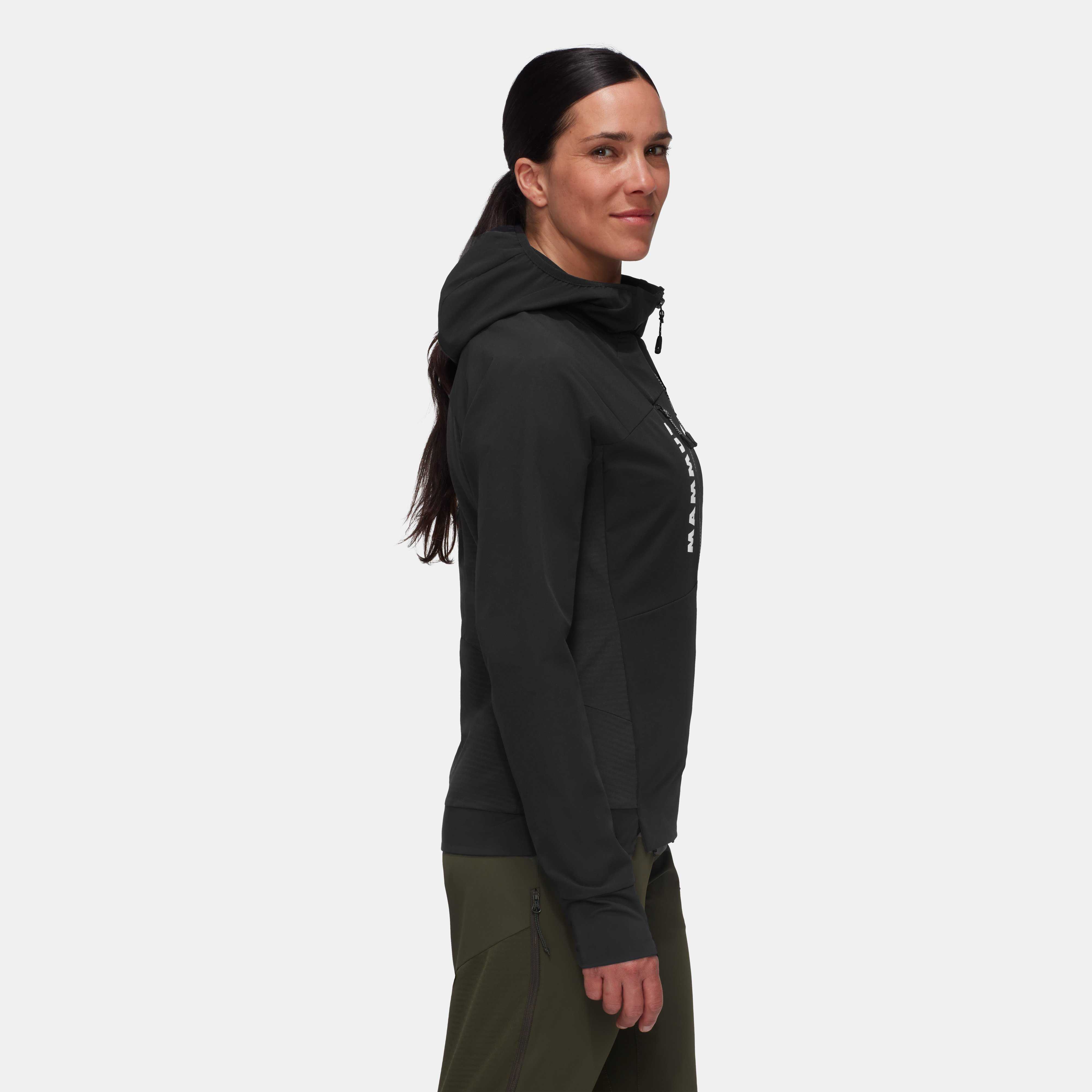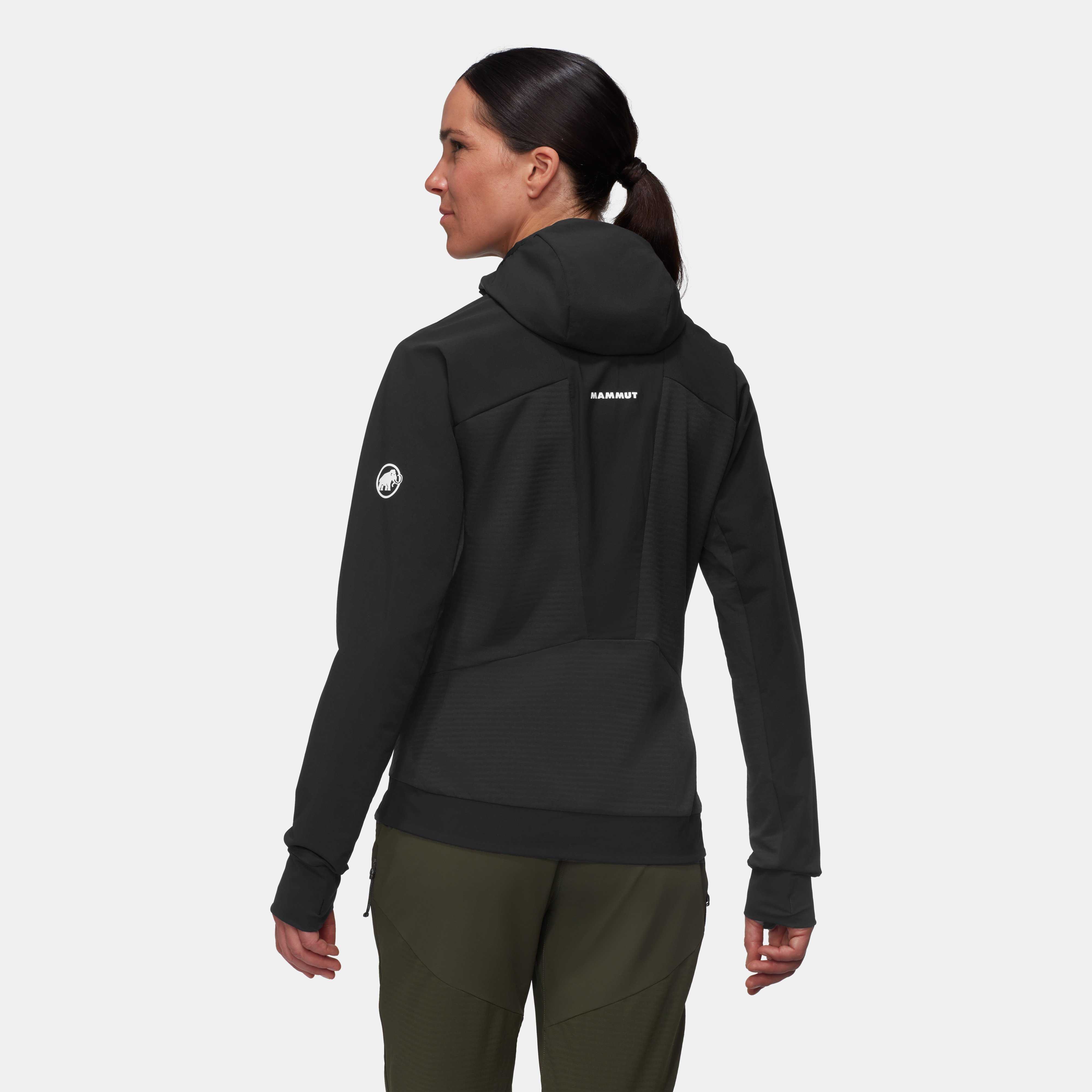What is a Softshell Jacket? – Benefits at a Glance
10/2024

Whether you’re wandering in the woods, conquering the steepest mountain tops, smoothly moving along a via ferrata or riding your bike like there’s no tomorrow – a softshell jacket is the ideal companion for pretty much every type of outdoor adventure. But what actually makes it so special? Find out everything you need to know about this versatile and high-performance clothing staple, and find the perfect jacket for your next excursion. The term softshell doesn’t actually describe a type of material, but a specific type of jacket consisting of various performance layers, and a soft outer shell. They’ve been around since the 80s, and have become a firm staple when dressing for the great outdoors. In this article, we’ll tell you everything about their special features and characteristics, as well as the different types of softshell jackets available.
What kind of material is softshell?
The great benefit of softshell jackets is their multi-layer hybrid system made out of high-quality materials, similar to hardshell jackets. Usually, there are two to three layers: a hard-wearing outer shell, a breathable membrane in the middle, and an insulating inner layer.
The outer shell is made out of abrasion-resistant material and a water-repellent coating to protect the wearer against the wind and light rain. In most cases, the material used is polyester, polyamide, or polypropylene.
The middle layer is the key component of softshell technology: It keeps wind and water at bay, while allowing condensation (e.g.sweat) to escape. This is better known as breathability – and is the all-decisive factor when it comes to wearing comfort, particularly during intense activities like hiking, climbing or biking.
The innermost layer of the jacket is made out of soft, insulating materials like fleece or velours, but also comes in more light-weight textiles like jersey or mesh. This layer is lightweight and flexible, and keeps your body warm and toasty – making for great wearing comfort while also giving you maximum freedom of movement.
Types of softshell jackets
Softshell jackets are available in three- and two-layer fabrics, as well as two-ply textiles. A three-layer softshell features a hard-wearing outer membrane, which –depending on the model – comes with additional benefits like waterproofness and/or heat insulation.
How waterproof are softshell jackets?
Softshell jackets with welding seams provide the highest level of waterproofness, while other models are more windproof and coated with a DWR layer (Double Water Repellent) to make sure the water rolls straight off the surface. This gives you a good amount of protection against light rain and drizzle. Two-layer jackets and two-ply fabrics don’t have a waterproof membrane, but instead come with a special impregnation on top. This makes them particularly elastic and breathable.
So contrary to waterproof hardshell jackets , softshell jackets don’t have a completely waterproof membrane. While it does make them a lot more breathable, they won’t be able to keep out the water when exposed to heavy, persistent rain. Want to know more? Just head to our article on the differences between hardshell and softshell.
How warm are softshell jackets?
Softshell jackets are constructed in a way that provides a lot of wearing comfort. Jackets with a fleece or micro-fleece layer on the inside provide additional heat insulation for an extra cozy feel: By trapping your body heat and wicking away moisture at the same time, you’ll enjoy fantastic heat retention. Combined with a windproof outer shell, this feature is particularly effective in combating windchill effects. Because of their thermal performance, softshell jackets are the perfect choice for outdoor activities during the spring and fall. However, in very chilly or wintery conditions they are no match for down jackets , insulation jackets or hardshell jackets – which is why you should always wear them with additional layers.
Benefits of softshell
Perfect air circulation: Softshell jackets are super breathable, meaning they allow moisture to escape, reduce sweating, and help regulate body temperature. Most models also come with additional zippers to give you even more options to regulate air circulation.
Freedom of movement: Elastic materials and the flexible construction provide maximum freedom of movement – which is especially handy when climbing and bouldering.
Perfect for changing conditions: Thanks to their windproof coating and cozy inner lining, a softshell jacket will keep you warm even in windy and slightly rainy conditions.
Versatility: Softshell jackets are available in a wide range of designs and are perfect for all kinds of outdoor activities like hiking, climbing and biking. Thanks to their comfortable and body-hugging fit, they’re also a great choice for everyday wear.
Lightweight and packable: Boasting a low deadweight and a compact pack size, softshell jackets are the ideal chocie for when you’re on the go.
Comfort: Soft materials and a comfortable cut make for great wearing comfort throughout the day.
Durability: The robust outer shell provides ideal protection – a must when engaging in strenuous and challenging activities like climbing or trekking.
What softshell jacket for what type of sporting activity?
Because of their incredible versatility, softshell jackets are perfect for many types of sporting activities: Whatever your requirements and the weather conditions, you’re guaranteed to find a design to suit your needs. So make sure to have a think about what type of activity you’ll mostly use the jacket for, and in what conditions. Here are a couple of tips for guidance:
Softshell jackets are especially handy for strenuous and sweat-inducing activities – for example ski tours, cross country skiing or trail running. Keep an eye out for a sufficient number of elastic and breathable areas, and opt for a warming, well-insulated fleece layer for when it’s freezing outside.
Even when mountaineering, hiking and biking in perfect weather, there’s always a chance of wind. Opt for an extra warm and windproof two-ply textile with a rough back.
Especially for winter sports like ski tours or mountaineering, where it often gets cold and uncomfortable, softshell pants are the perfect addition to your softshell jacket.
If you’re all about climbing, bouldering and trekking, choose a robust outer material that will be hard-wearing enough to withstand the strains that come with the territory. Softshell jackets with a thick nylon fabric outer layer are your best choice for this. Avoid choosing a bulky design, as that will restrict your freedom of movement. When trekking in alpine surroundings, rain and cold temperatures are part of the package. So it’s best to pack some extra layers, or even a hardshell jacket.
Everyday use: Not only are softshell jackets perfect for sports and other outdoor activities, they’re great for everyday use as well. You’ll be perfectly protected against the cold, wet, and wind, while still being able to wear your jacket in warmer temperatures without sweating – all thanks to its outstanding breathability.
Caring for your softshell jacket
Wash your softshell jacket as often as necessary, but as little as possible, and always use a gentle cycle. That way, its water repellent coating and breathability will remain intact for longer. To impregnate your jacket, use impregnation sprays or a special softshell impregnation – and you’ll be ready to go whenever the great outdoors is calling!
Checklist for buying a jacket
What types of activities do you want to use the jacket for?
Factor in weather conditions and – if necessary – choose a high-quality DWR coating.
Check the jacket for breathability, and how windproof it is
How tight should the fit of a softshell jacket be? The jacket should be comfortable to wear and give you maximum freedom of movement.
Choose a lighter softshell for intense activities and thicker softshell for improved thermal performance.
What to wear with softshell jackets?
Softshell jackets are versatile and perfect for layering. If you want to have enough space for your base layers , an additional midlayer or a fleece jacket , loose-fitting, three-layer softshells are ideal. Two-layer and two-ply softshell jackets are designed to be worn as midlayer, which means they are more tight-fitting. Wear thin base layers underneath, and add anything else you need for protection against the elements on top. When the weather conditions are bad, this could be a waterproof hardshell jacket to keep out the rain and snow.
All you need now are a matching pair of hard-wearing, wind- and waterproof, breathable hiking pants or softshell pants to complement your look. For severe weather, waterproof hardshell pants are a great addition. Plus, sturdy outdoor shoes , gloves and a warming hat will help you face all kinds of adversities head-on.
Want to look like a pro in your softshell outfit? Let our top athletes inspire you and find out everything there is to know about their favorite Mammut equipment.
Explore Mammut Technologies
We are inventors, developers and pioneers. We take big, exciting ideas and turn them into reality, pushing quality and performance up to a whole new level. And we’ve been doing it since 1862. Find out more about our latest technologies.
